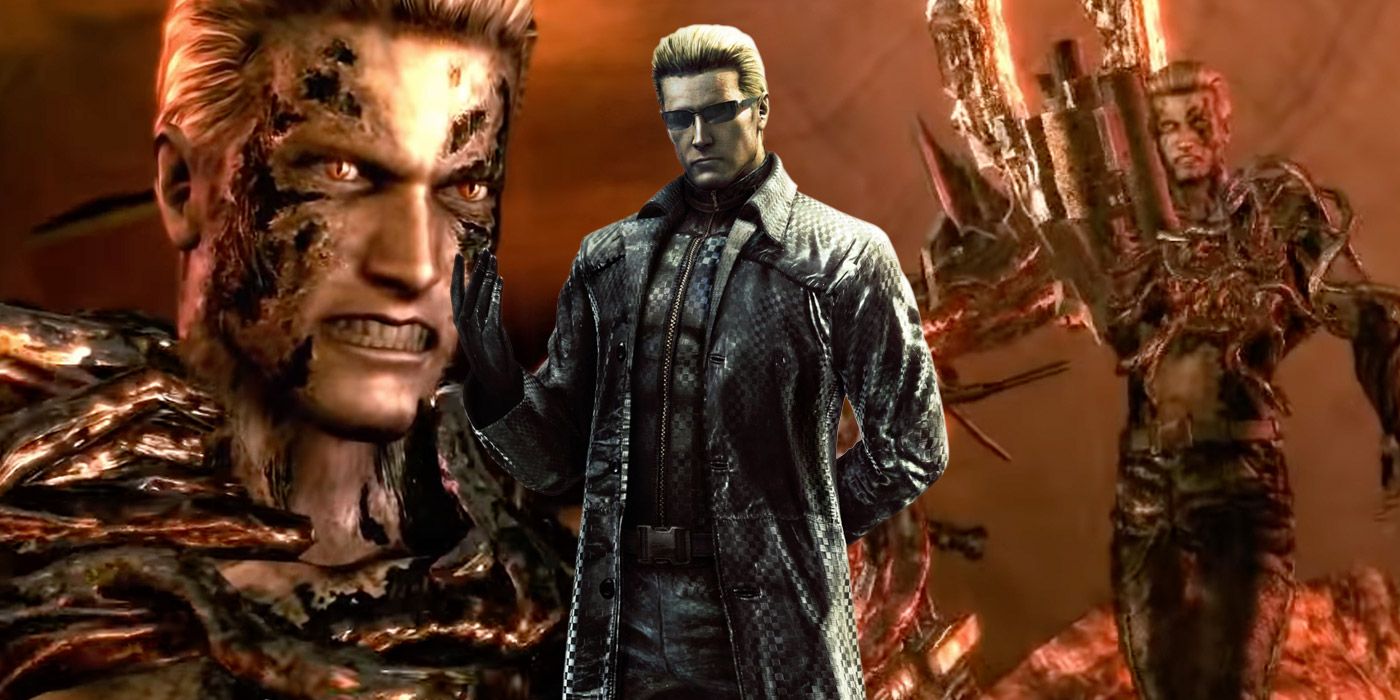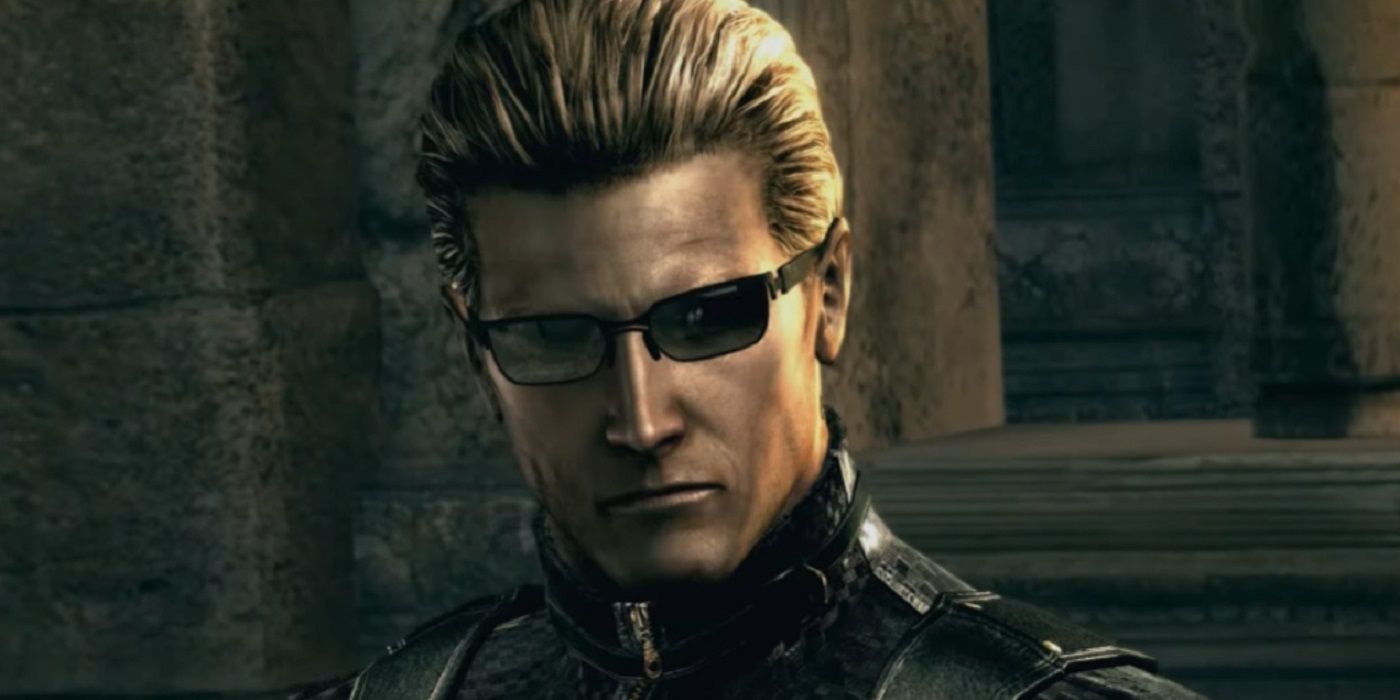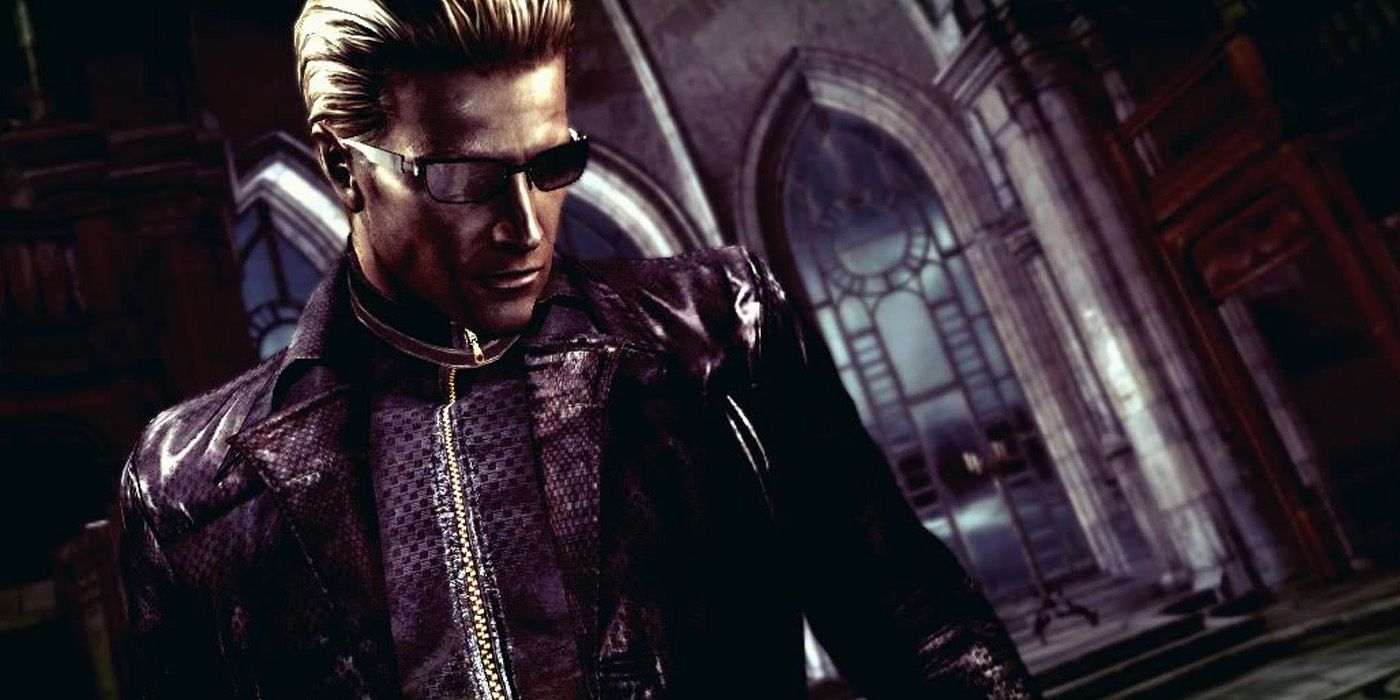Resident Evil has had plenty of interesting characters over the years, and love him or hate him, Albert Wesker is generally considered one of the best. This is not to say he's the most likable character, but he is a perfect blend between a mad scientist and corrupt corporate espionage. Wesker is the epitome of a camp 90s villain with nefarious plans, and he had a key role in some of the Resident Evil franchise's most famous moments.
The first Resident Evil came out in 1998, and Albert Wesker's original role as a double agent had obvious post-Cold War influences. The late 80s and early 90s marked a growing distrust in government and corporations, as well as a rise in paranoia, while at the same time digital technology was rapidly evolving. Wesker's ongoing legacy offers some insight into how these attitudes are changing more broadly. The Resident Evil games have evolved to reflect more contemporary fears and technological capabilities, but Wesker still remains one of the most iconic villains of the franchise.
Wesker's Background
While details about his early life are somewhat sketchy, some core facts about Wesker's life before the events of the first Resident Evil game are known. For one, his name might not actually be Albert Wesker, which helps solidify his status as mysterious and deceptive. He gets the name from the Wesker Project run by Dr. Oswell Spencer, that being a eugenicist program to create an elite race of humans with some clear Nazi connotations in the obsession with eugenics and genealogy.
Wesker works for Umbrella as a high-ranking researcher and virologist, so it can safely be assumed that he has a doctorate and is, in fact, Dr. Albert Wesker. For his early life, he largely played subject in an experiment, as Dr. Oswell Spencer played the mad scientist. By stage two of the Wesker Project, Albert Wesker was one of the few survivors and eventually learns the full truth of his origin. Both Spencer and Wesker have megalomaniacal goals, with Spencer wanting to be a god using an army of perfect Wesker subjects, and Wesker primarily wanting power. There are moments when Wesker's character is morenuanced, such as his relationship with Dr. William Birkin.
Wesker stayed at Umbrella until shortly around the time of the Tyrant Project and then bounced around a bit. He joined the United States Army and then S.T.A.R.S.; Wesker stays with S.T.A.R.S. right up to the events at Spencer Mansion in the first game. At some point during this time, Wesker also fathered a son, who turns out to be Jake Muller from Resident Evil 6.
The main takeaway for any character study of Wesker is that he is an experiment himself, which helps to explain his obsession with various virus strains and his willingness to inject himself repeatedly. Wesker’s motivations are complicated, as at first he is driven by anxiety concerning Dr. Spencer, his creator, and later he sees himself as a chosen one meant to bring on an extinction event. Like many stereotypical villains, Wesker’s biggest flaw is his own unwavering belief that he’s in the right.
Resident Evil Game Appearances
Albert Wesker has gotten his share of screen time in Resident Evil games. His role in the first game is to act as the double agent, and then his plans to keep Umbrella’s research make him a triple agent just out for himself. From here, Wesker is a villain. He unleashes the Tyrant at Spencer Mansion, injects himself multiple times with different virus strains, and tries to end the world. Typical bad guy stuff. But Wesker’s camp style and flair for the dramatic are much more memorable than the average villain.
Often sporting a pair of shades and slicked-back hair, Wesker crops up in both prequel and sequel games in the Resident Evil series. In Resident Evil Code: Veronica, Wesker returns as a secondary villain, now with superhuman powers. As a result of Wesker’s origins and the many times he injects himself with experimental viruses, Wesker becomes less human as the series progresses. This is absolutely not uncommon for Resident Evil villains, who by this point are expected to mutate into hideous monsters before any final confrontation — such as with Lady Dimitrescu in Resident Evil Village.
Resident Evil 5 has Wesker as the main antagonist, and although it’s only one of his many appearances in the franchise, RE5 gives Wesker the appropriate role in this story to emphasize his almost comical villainy. This time, Wesker is working with TRICELL and conducting nefarious plots until a final confrontation with Chris Redfield.
The fight between Chris and Wesker (and Sheva) at the end of Resident Evil 5 was seen by many as a 'jumping the shark' moment. Having Chris punch massive boulders out of his way while a mutated Wesker attacks him in a volcanic crater surrounded by lava was a bit too much for some, and it felt like Resident Evil had truly lost its horror roots.
Wesker eventually falls into this molten lava, but unlike the T-800 in Terminator 2, he does not go down easily. Chris fires a rocket at him while flying away in a helicopter, and that is the presumed end of Wesker. While this fight was seen as ridiculous, it did mark a change in the Resident Evil franchise, and newer games have gone in a noticeably different direction. In some ways, Wesker’s comical extravagance as a villain, and the reactions to him, were the final push for Resident Evil to reinvent itself.
He does appear in the live-action Resident Evil films but is outshined by Dr. Alexander Isaacs (played by Iain Glen) as the mad scientist villain. Wesker fans can rejoice knowing that he will be appearing in the upcoming live-action TV show and the upcoming Resident Evil film reboot, but whether he will be revived in future Resident Evil games is uncertain.



